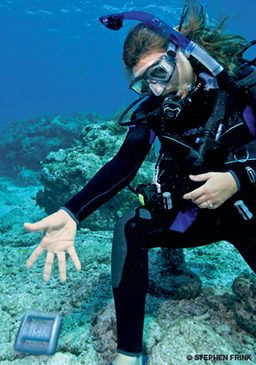Accidents, near misses and safety issues are favorites of popular media outlets, and they are certainly concerns under constant scrutiny within the diving community. While it’s never fun to think about what can go wrong when diving, it’s important to study cases where things do go awry. In doing so, we learn that often the problems have one thing in common: Bad things happen when people are unaware of their surroundings.
Known variously as being in the zone, centered or focused, situational awareness (SA) is the heightened state of consciousness one achieves when all relevant data is processed and followed by comprehension and appropriate action. Training is not enough. Preparation, practice and even checklists are not enough; divers must be constantly aware of their surroundings, be able to process what present circumstances mean and be ready to make any necessary adjustments. Consider what can happen when situational input is ignored.
Aug. 17, 2006: Aboard the U.S. Coast Guard icebreaker Healy, two crewmembers prepare for an under-ice dive evolution for practice and familiarization. The officer is not current as a diver, and the enlisted diver is not experienced in under-ice operations. Among other oversights, they are overweighted, and their drysuits and BC inflators are not connected, yet the dive proceeds. In all, the final USCG report listed more than 30 errors of all types, resulting in two deaths, loss of command, courts-martial and ruined careers.
Often, diving accidents and deaths share a common theme: loss of SA. Most accidents result from a series of small variances from safe procedure. In almost all cases, the accident could have been avoided at any point if the variance had been noticed, its implications understood and an appropriate response implemented.

Situational awareness is not unique to diving; it has been studied for decades not only by diving institutions like DAN®, but by other entities such as the U.S. Air Force, firefighters and industrial engineers. In more than 40 years of study, several fundamentals of SA have developed and coalesced into three levels of situational awareness: perception, comprehension and projection. Let’s take a look at how they apply to divers.
Level I — Perception: The safe diver must be aware of relevant data. An obvious example is depth. If the sole focus of a diver is maintaining a preplanned depth, but the critical value of gas reserve is ignored, the result is an out-of-air emergency. The solution? Aggressively seek information relevant to your situation, and run an internal checklist, not of items or procedures, but by asking yourself, “Am I aware, am I missing anything, does this situation feel different in any way?”
Level II — Comprehension: Continuing the example, depth and gas reserve are perceived (from Level I analysis), but that information can become meaningful only when it’s placed in the proper context. It is not enough to acknowledge that you have 1000 psi left in your tank. To achieve comprehension, details like where your buddy is, how far away you are from the boat, current strength and your safety stop plans all give meaning to your remaining air supply and should prompt appropriate action.
Level III — Projection: Now that the data is comprehended, you are ready to take appropriate action. This ability to “project” is the mark of experts in all fields. You’ve noted your remaining air supply and comprehended its meaning in your given circumstance, so the action you take will now have direction. Whether that means making immediate buddy contact and initiating an ascent or starting your swim back to the boat will depend on how you have processed the data and the particular variables of your situation.
The thought process for achieving situational awareness can be broken down into three steps: perception, comprehension and projection. Conceptually clean and well founded on empirical and experimental data, these steps are nonetheless a challenge to implement on a consistent basis. After all, we are human and with that comes cognitive limitations. But with practice and a conscious effort, divers of every level and ability can improve their dive safety.
© Alert Diver — Q1 Winter 2011